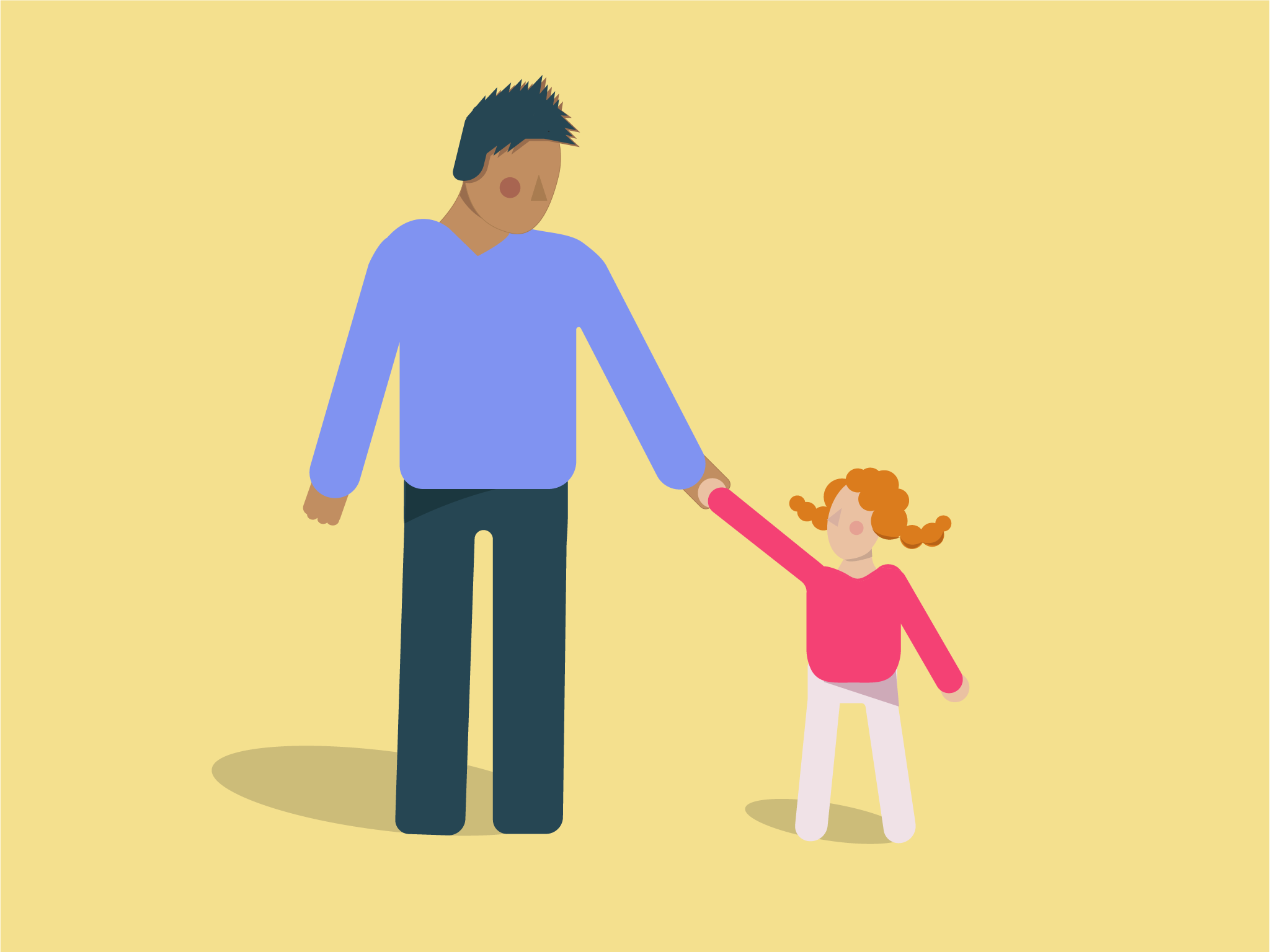Working to revolutionise post-adoption contact between birth parents and their children
Allowing full digital contact could make a difference to many families, campaigners tell Cherry Casey

In 2004, Angela Frazer-Wicks’s two young sons were placed into the care system. For years she had fought with her local authority to keep her children, but due to mental health problems and domestic violence, she lost her battle.
On saying goodbye, she promised her oldest, who was five years old, that she would write to him. Almost immediately after they were removed, however, she learned that this would not be possible; she only had the legal right to write to them – via the system known as “letterbox” – once they had been adopted, and only then if the adoptive parents allowed it.
“I was distraught,” says Frazer-Wicks, “because I knew my son would be waiting. I kept saying, ‘He’s going to think I’ve forgotten, you have to explain it to him. Say anything age-appropriate so he knows I have not forgotten him.’”
The boys were adopted almost two years later, and letterbox contact was permitted, meaning Frazer-Wicks could receive a letter from them once a year and could send one in return. But there were stipulations: the letters would be mediated by the local authority, and if they were deemed to be inappropriate, they would not be delivered.
This led to correspondence that was sanitised, strained and almost meaningless. She couldn’t even include questions like: do you like your new school?, or how tall are you now?, because it would be another year until they could respond. “I just wanted to be able to talk to my son like I always had,” she says. “What I really wanted to say is, ‘It doesn’t matter how much time has gone past, I still miss you just as much, and I still love you just as much,’ and I felt incredibly guilty not saying that, because my child wouldn’t know why. Nobody would have explained to him, ‘There’s a set of rules your mum has to follow.’”
Letterbox is still the system used in England for post-adoption contact today, despite campaigners such as Frazer-Wicks – who is now reunited with her eldest son – asking for reform for years on the grounds that it is “generations out of date”. And not just because it deals with handwritten letters in a digital world, but because it has failed to keep up with today’s understanding that adopted children should be supported in having meaningful relationships with their birth families for their emotional and mental health (an estimated two-thirds of adoptees over the age of 16 have sought help for their mental health).
This recognition has come in part from “the number of adoptees saying, ‘I wanted a relationship with my mother, or my father or my grandmother or my aunt, and the fact that I wasn’t allowed was not in my best interest,’” says Frazer-Wicks. “It was not listening to the voice of the child: ‘You didn’t see or hear me, you picked me up from one place, put me somewhere else and thought that I wouldn’t be left traumatised.’” And of course, she adds, “it’s 2023. Social media means children can find their families.”
And while there are instances of social media enabling families to find each other at last when the system didn’t, there are also tales of young teenagers trying to manage complicated relationships with their birth families by themselves, or putting themselves in danger with people that posed a genuine risk.
I am filled with hope that change is coming
To help form these connections in a safe, supportive way, there needs to be a contact system that is relevant to how people communicate today, that can adapt to a family’s changing needs and that – most importantly – can be sustained over time.
Letter Swap is one digital platform trying to achieve this. Funded by Nuffield Family Justice Observatory and developed by social enterprise Link Maker, the system went live in July 2022 and is currently in pilot phase.
For now, the system focuses on the exchange of written messages and PDF scans. “The latter is really useful because when we talked to people about what they like about letterbox, they often said it is the personal and tangible aspects they really treasured,” says Beth Neil, a professor of social work at the University of East Anglia who is supporting the implementation of the system.
On Letter Swap, people might scan in a child’s drawing for instance, so that it can be kept in a digital archive, before also sending it on to the birth parent, so they can have the physical copy (“Receiving a letter that has been touched by your child is indescribable,” says Frazer-Wicks). The next part of the pilot, later this year, will include the exchange of video messages.

Digitising contact has to tackle both the practical and the personal problems with letterbox, explains Neil. With regards to the former, the system currently relies on a paper-based filing system involving thousands of letters, “and it’s a huge administrative task to keep on top of it,” says Neil. Mistakes happen, with devastating consequences.
The 18th birthday card that Frazer-Wicks sent her eldest son, for instance, was lost. Something that sent her “frantic” with worry, as she had no way of letting him know she’d not forgotten such an important date. “People have often talked about letters going into a black hole,” says Neil. “In Letter Swap, different stages of the letter’s journey can be acknowledged. You can see that it has been opened and read by the social worker, that it’s been sent on to the recipient and that it’s been opened by them.”
In terms of personal issues, says Neil, after having your child taken away from you, to “sit down and know what to put on paper, and how much of your emotion to express, and what to hold back, is really difficult”. A digital platform alone cannot solve that – in-person support is needed – but what it can do is allow communication to take place more frequently and flexibly. How and when users can contact each other can be negotiated by the families involved, and it will allow for a “little and often” approach, which was highlighted during the pandemic (when digital contact suddenly had to be used by families in the care system) as feeling more “natural”, says Neil.
Natural is the word Tiegan Boyens, 21, also uses to describe the contact she has with her birth family, which is primarily digital. Boyens was put into care at the age of two and adopted at four, and had letterbox contact with her maternal grandparents, as neither parent was in a position to write letters at the time of her removal. During her teenage years she was able to meet these grandparents in person, after which “things dominoed” and she was put in touch with her mother, sister and father.

“I had an amazing upbringing and never felt like I was massively missing out, but there were all these gaps [in my story], especially on my dad’s side,” she says. There was no information about her father in her adoption file, despite him being her primary carer, but Tiegan always had a curiosity about him, once sending off a homemade hot air balloon in the hope it would reach him.
So when her birth mum offered his phone number, she jumped at the chance. “We sent each other long messages for months, then when we wanted to chat by voice, we used a PS4, so that if we needed a distraction or something to take the pressure off, we could always put a game on.” Her sister had wanted to contact her for years, but didn’t know how. After her grandparents passed her details on, the two of them sent texts for two years (due to the restraints of the pandemic) before meeting in person. Today, Tiegan has strong connections with her birth family, but says without the agile, flexible, low-pressure communication that text messages, emails and gaming enabled, “we wouldn’t be where we are today”.
That Tiegan’s bond with her birth family has not threatened the stability and love of her adoptive family demonstrates the message that campaigners such as Frazer-Wicks have long been desperate to get across. “For 15 years I’ve been the lone voice,” she says, but at last more birth parents are being invited to share their stories, leading to “real acknowledgement that birth families are not just ‘a risk’ that need to be chucked to one side”, but people who were often victims themselves, who were let down by the system, who deserve and need to be allowed a relationship with their children.
I had an amazing upbringing but there were all these gaps
Terry Fitzpatrick, director and founder of Arc Adoption North East, agrees that strong connections with the birth family “add to the security of the adoptive placement, rather than undermine it”, which is one reason why his organisation developed ArcBox, a digital platform for creating a child’s life story book. These books – obligatory for every child with a plan for adoption – are traditionally in physical forms and contain information such as baby photos and family trees, with the aim of helping that child to have a sense of their identity.
“But it was very much something that was produced and then left to its own devices, as to whether adopters were proactive in using it or whether a child wanted to look at it,” says Fitzpatrick, “so we tried to develop something that was more proactive in its intention.” On ArcBox, a child can create and personalise their own profile – where they can choose an avatar and play games, for instance – as well as see their life story, which is interactive and can be added to as they grow, in the hope it remains a relevant part of their life.

“We’ve always believed that life story work and contact should be seen as part of the continuum, not two separate entities,” says Fitzpatrick, and so a communication app has been incorporated into the system, currently in pilot phase. The aim of the app is to enable the exchange of messages, videos and photos between the child and other relevant connections, birth family included.
Messages will still be mediated by a designated person, whether that be a social worker or similar, but if over time it was decided that mediation was no longer needed, child and birth family could interact directly. This is also the case with Letter Swap and is one of the vital contrasts to letterbox: it is more rooted in trust.
“During research birth parents have said to us, ‘when you’re in prison, your letters are opened and checked – why should we be treated like a prisoner?’,” says Neil, who has “been arguing for a number of years” that work should be done to distinguish whether a birth parent is a genuine risk to a child, as the letterbox system assumes.
Frazer-Wicks agrees that it is deeply unfair that a birth parent’s risk level is never reviewed; she was assessed by the local authority 11 years ago, when pregnant with her daughter, and found to be of no risk. But this changed nothing in terms of the contact she was allowed with her sons.
Going further, what actually constitutes risk? Is it harmful for contact to be “emotional”, Neil asks? “I’m sure it’s very difficult for an adopted child if their parent spends the whole letter talking about how traumatised they feel about this adoption,” says Neil, “but we know that adopted people often worry that their birth parents rejected them. So therefore, you would think it’s quite helpful for them to know their parents do care about them?” Frazer-Wicks agrees. “I’ve said it countless times: how was it dangerous for my son to be told he was loved and missed? No one had taken into account the fact that that child would be grieving and needed that reassurance.”
Digitising contact alone will not transform the adoption process; but, says Frazer-Wicks, for the first time she is “filled with hope that change is coming”. Hope that these systems will do more than move with the times, but will begin to tackle the problematic attitudes embedded in the system, and facilitate the meaningful connections that adopted children and their families have long been crying out for.






Join our commenting forum
Join thought-provoking conversations, follow other Independent readers and see their replies
56Comments